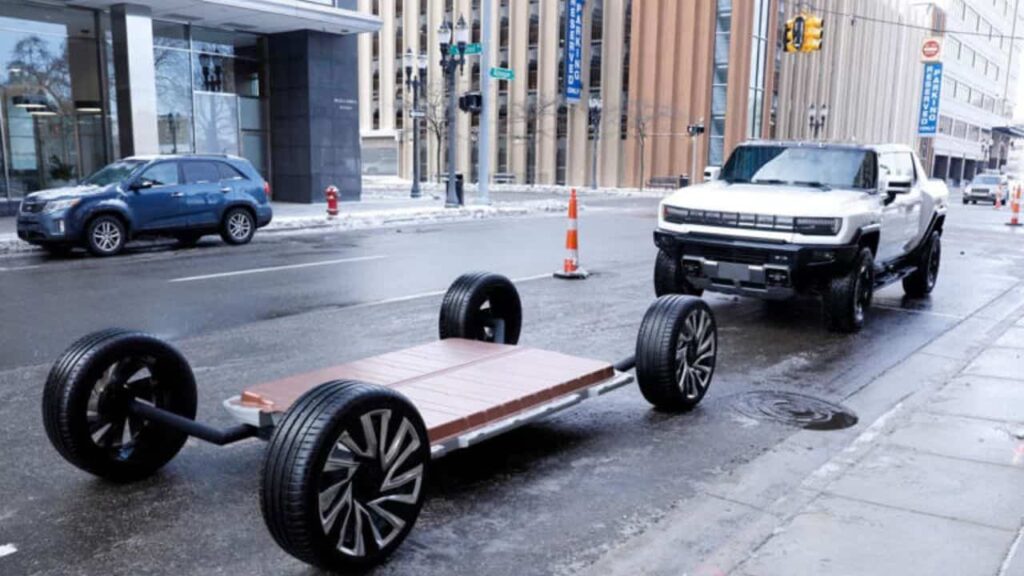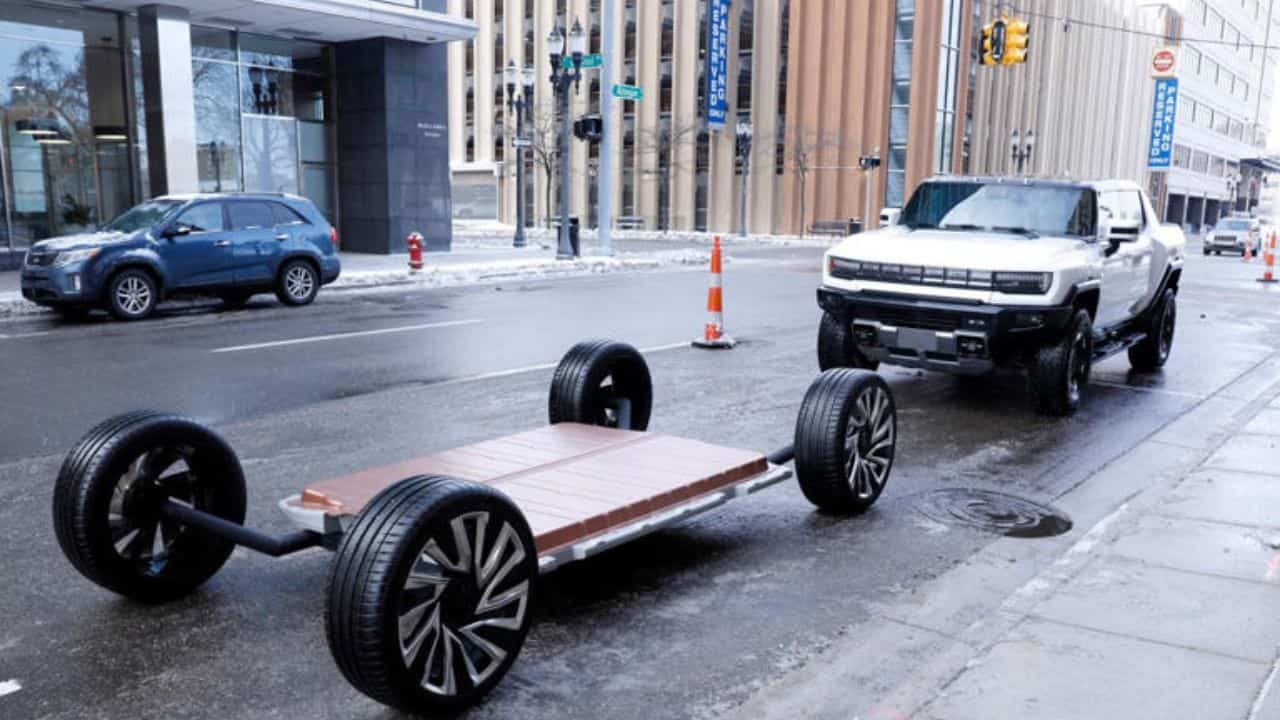General Motors, GM battery plant delay, Indiana battery factory, EV market challenges, electric vehicle strategy, GM and Samsung SDI, EV production delay, electric vehicle adoption, battery manufacturing, Mary Barra
General Motors has delayed the start of its Indiana battery plant to 2027, reflecting the broader challenges in the EV market. This article explores GM’s evolving electric vehicle strategy, the reasons behind the delay, and the implications for the future of electric vehicles in the U.S.

General Motors’ Delayed Indiana Battery Factory: A Sign of EV Market Realignment
General Motors (GM) has announced a significant delay in the opening of its planned battery manufacturing facility in New Carlisle, Indiana. Originally slated to begin production in 2026, the plant’s operations are now postponed until 2027. This delay marks the latest in a series of adjustments by the automaker as it navigates the evolving landscape of the electric vehicle (EV) market. In this article, we will explore the reasons behind this delay, the broader context of GM’s electric vehicle strategy, and the implications for the EV industry as a whole.
The Delayed Indiana Battery Plant
The New Carlisle battery plant is part of GM’s broader strategy to secure a supply chain for its electric vehicles. The facility, developed in partnership with South Korean battery manufacturer Samsung SDI, represents a $3.5 billion investment aimed at boosting GM’s battery production capacity in the United States. The plant is expected to contribute 15% to 20% of GM’s total battery capacity in the U.S., a critical component of the automaker’s goal to expand its EV lineup.
However, GM’s decision to delay the plant’s production timeline to 2027 is indicative of a more cautious approach to the EV market. The delay reflects a broader trend among automakers who are reassessing their EV strategies in response to slower-than-anticipated consumer adoption of electric vehicles in the U.S.
The Broader Context: GM’s Evolving EV Strategy
Over the past several years, GM has positioned itself as a leader in the transition to electric vehicles. Under the leadership of CEO Mary Barra, GM committed to an “all-electric future,” with ambitious goals such as producing one million EVs annually in North America by 2025. The company has also made substantial investments in battery technology, partnering with Asian manufacturers like LG Energy Solution and Samsung SDI to build a series of battery plants across the U.S.
Despite these commitments, GM has faced challenges in achieving its EV production targets. In July 2024, the automaker announced a delay in the launch of a new Buick electric vehicle and postponed the opening of an EV truck factory for the second time. Additionally, GM abandoned its goal of having enough factory capacity to produce one million EVs by 2025, signaling a recalibration of its expectations.
The slower-than-expected adoption of EVs by U.S. consumers has played a significant role in GM’s decision to adjust its timelines. While the company remains committed to an electric future, the market’s reality has prompted a more measured approach. As Mary Barra stated, “The EV market and GM sales will continue to grow as more customers experience our EVs, the charging infrastructure builds out and we expand into more segments.”
Consumer Adoption and Market Challenges
The adoption of electric vehicles in the U.S. has been slower than many automakers anticipated. Several factors contribute to this, including concerns about range anxiety, the availability of charging infrastructure, and the higher upfront costs of EVs compared to traditional internal combustion engine vehicles. Additionally, fluctuating fuel prices and economic uncertainty have made some consumers hesitant to make the switch to electric vehicles.
Automakers like GM and Ford have invested heavily in EV technology and production capacity, expecting rapid growth in consumer demand. However, the reality has been more gradual. According to GM, the company plans to produce at least 200,000 electric vehicles in 2024, but only managed to sell around 38,000 in the first half of the year. This discrepancy between production capacity and actual sales underscores the challenges facing the EV market.
Moreover, the pace of charging infrastructure development has not kept up with the growing number of electric vehicles on the road. While significant investments are being made to expand charging networks, the current infrastructure remains insufficient to meet the needs of a fully electric automotive future. This has contributed to consumer reluctance, as potential EV buyers worry about the practicality of long-distance travel and the convenience of daily charging.
Federal Incentives and Industry Impact
Despite these challenges, the U.S. government has introduced policies aimed at encouraging the adoption of electric vehicles. Federal tax credits for EV buyers and incentives for domestic battery production are designed to reduce the cost barriers associated with electric vehicles and stimulate demand. GM and other automakers are keen to take advantage of these incentives, which can help offset the substantial investments required to build EV production capacity.
The delayed Indiana battery plant is part of GM’s broader strategy to tap into these federal incentives. The plant, once operational, will play a crucial role in supplying batteries for GM’s expanding EV lineup. However, the delay in its opening suggests that GM is taking a more cautious approach, ensuring that its investments align with the pace of market demand.
The impact of GM’s decision extends beyond the company itself. The EV market is highly competitive, with automakers vying to establish themselves as leaders in the transition to electric mobility. GM’s delay in battery production could have ripple effects across the industry, influencing the strategies of other automakers and suppliers.
The Future of Electric Vehicles: A Long-Term Vision
While the delay in the Indiana battery plant may be seen as a setback, it is important to view it within the context of GM’s long-term vision for electric vehicles. The company remains committed to an all-electric future, but the path to achieving that goal is proving to be more complex and gradual than initially anticipated.
GM’s strategy now appears to be one of measured growth, aligning production capacity with market demand while continuing to invest in the technology and infrastructure needed to support an electric future. As Mary Barra noted, “The EV market and GM sales will continue to grow as more customers experience our EVs, the charging infrastructure builds out and we expand into more segments.” This statement reflects a recognition that the transition to electric vehicles will take time and that consumer education and infrastructure development are critical components of that transition.
In the coming years, the success of GM’s EV strategy will depend on its ability to navigate the challenges of consumer adoption, supply chain management, and competition from other automakers. The company’s decision to delay the Indiana battery plant is a reflection of the need to adapt to the evolving market conditions and ensure that its investments are sustainable in the long term.
Conclusion: Navigating the Transition to an Electric Future
The delay in the start of production at GM’s Indiana battery plant is a significant development in the company’s electric vehicle strategy. It highlights the challenges that automakers face in the transition to electric mobility, particularly in the U.S. market where consumer adoption has been slower than expected. While GM remains committed to an all-electric future, the delay underscores the need for a more measured approach that aligns with market realities.
As the EV market continues to evolve, GM’s ability to adapt its strategy and navigate the complexities of consumer demand, infrastructure development, and federal incentives will be crucial to its success. The delay in the Indiana battery plant may be a setback, but it also represents an opportunity for GM to refine its approach and position itself for long-term success in the electric vehicle market.
Read More
